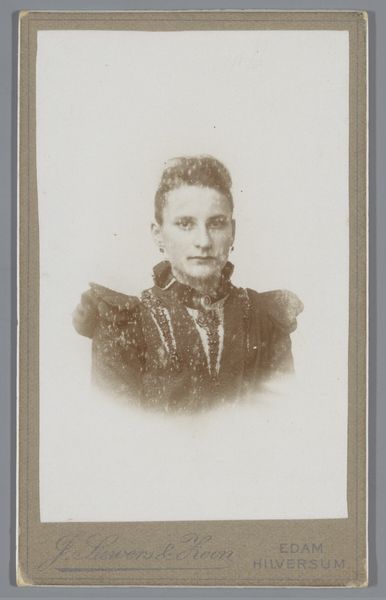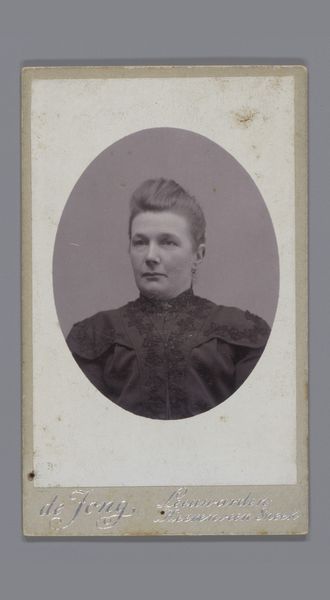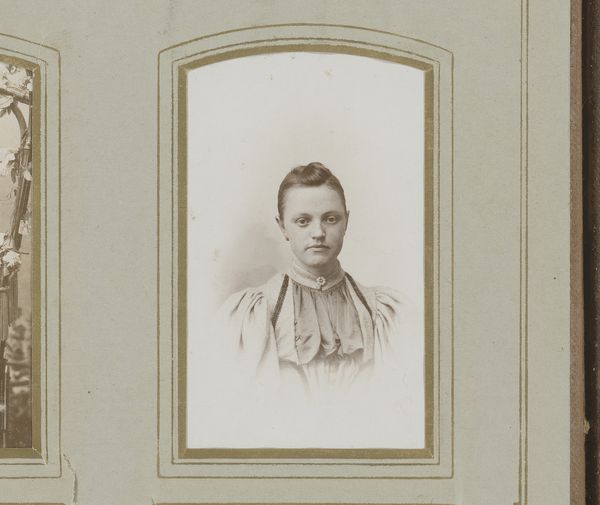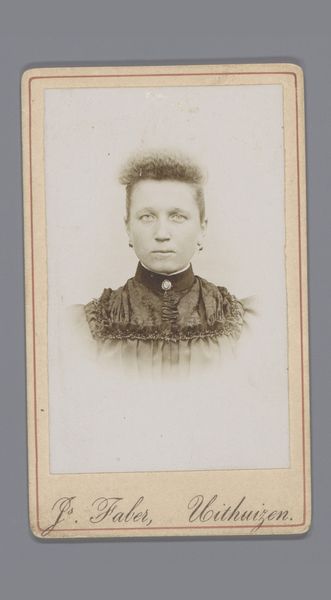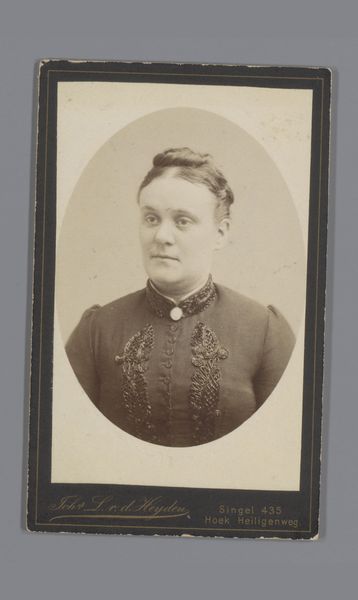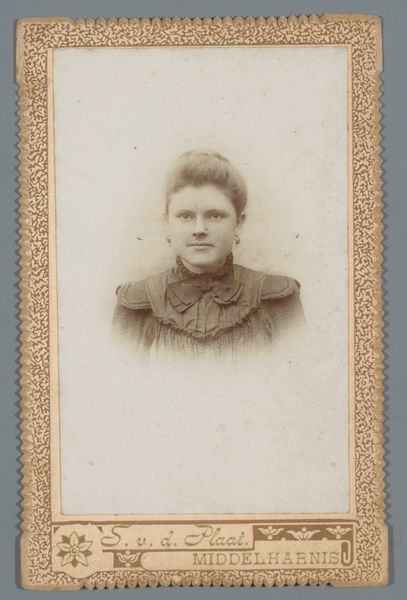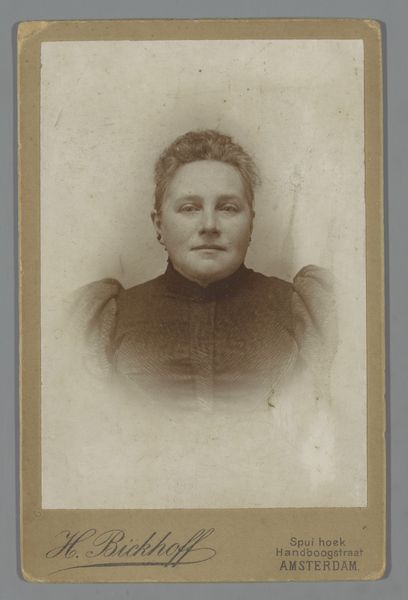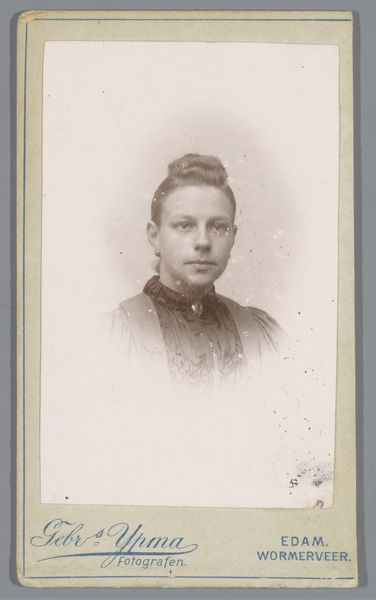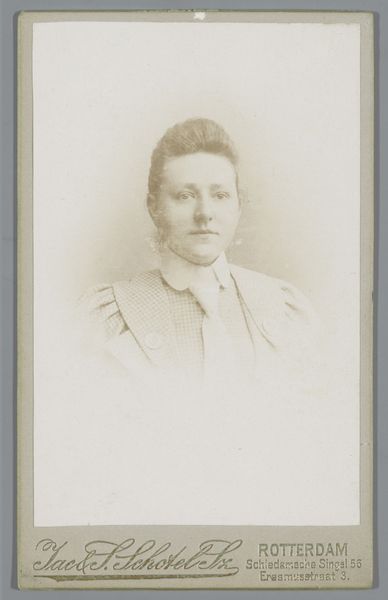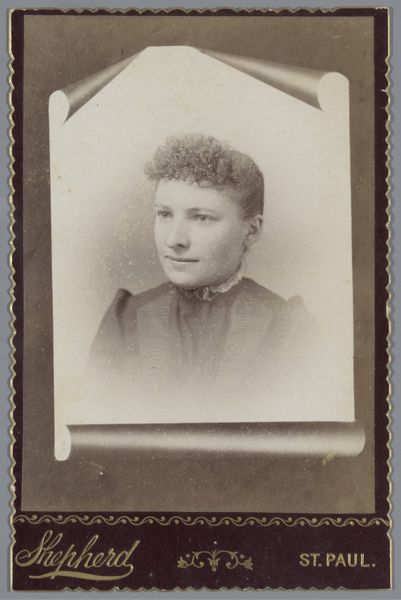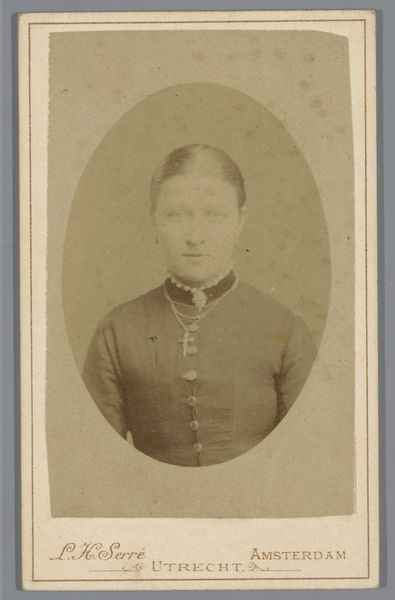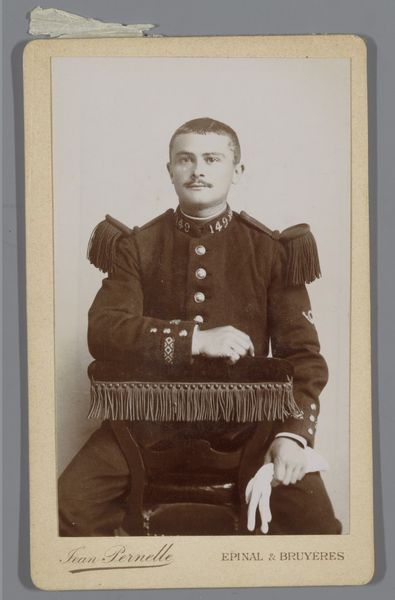
photography, gelatin-silver-print
#
photography
#
gelatin-silver-print
Dimensions: length 105 mm, width 62 mm
Copyright: Rijks Museum: Open Domain
Editor: Here we have "Portret van Betje Kuyn," a gelatin-silver print from somewhere between 1890 and 1918, made by J. Siewers & Zoon. There's an almost tangible quality to it—you can see the textures in her dress. What can you tell me about this piece? Curator: This photograph prompts us to think about the labor involved. Not just the photographer’s technical skill, but also Betje Kuyn's involvement in crafting her own image. The dress, jewelry, and even hairstyle involved labor and resources. How much time did Betje invest in the production of her own portrait? Editor: That's interesting. I hadn't thought about Betje as an active participant in creating the portrait. I'd assumed it was all down to the photographer. So, you're saying the clothing and accessories tell a story about value and work? Curator: Exactly. Consider the availability of these materials during this period. Where did the silver in the print come from, who mined it? The labor of countless unseen people is embedded within this single image. These objects tell us about manufacturing processes, distribution networks, and Betje’s access to the consumer culture. It begs the question: What level of agency did the sitter have over the means of portraying herself, given the limitations of the available materials, their cost, and the control exerted by the photographic studio? Editor: So, beyond the aesthetic, the value lies in understanding the entire system that brought this portrait into existence? Curator: Precisely. This portrait becomes a window into the industrial and social conditions of the time. Considering photography as a form of mass production really reframes how we interpret its historical significance. Editor: This gives me so much to think about, considering the image-making process, how different and unique, and at the same time how dependent, this early portrait image-making was on available processes, raw material supply chains, and evolving cultural habits.
Comments
No comments
Be the first to comment and join the conversation on the ultimate creative platform.
